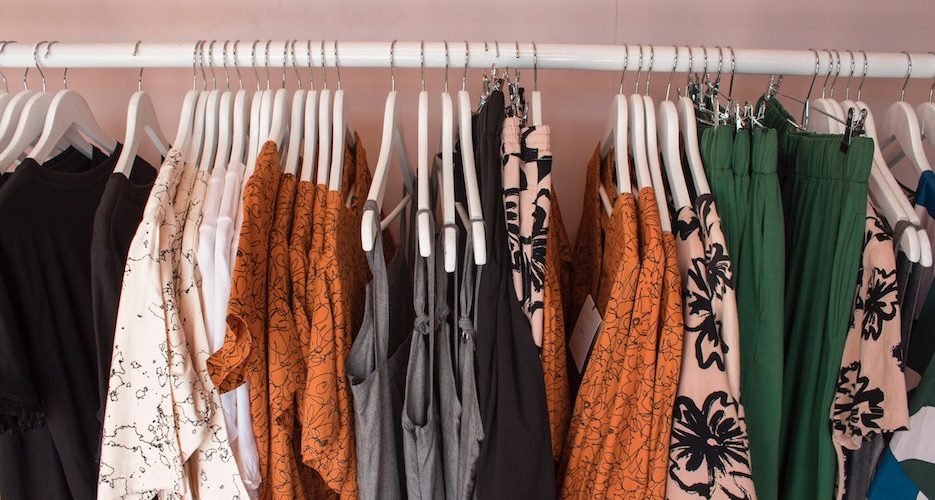An online boutique can be a great way to make money online, whether you’re selling your own creations or curating items in a virtual store for customers. According to The Fashion Industry and Apparel Report, revenue in the e-commerce fashion industry is expected to rise from $481.2 billion in 2018 to $712.9 billion by 2022.
If you love choosing colors and fabrics, styling different outfits, and searching for just the right finishing touches, this is an ideal way for you to snag a share of those dollars.
So how can you get started with your online boutique? It takes planning, funding, branding, marketing, deciding where you’ll get your products, and creating a website where your customers can easily shop.
Here’s what you need to do before you open your virtual doors to the public.
Create a business plan
Before you start an online boutique, you need to have a foundation in place, in the form of a business plan.
This doesn’t have to be a lengthy document unless you plan to take out a loan from an investor or a bank. You can keep it short and sweet, and stick to the basics. Think of it as a roadmap for your boutique that will help keep you on track as you open your store and grow your business.
Here’s what your business plan should include:
- Your value proposition, or what would make someone want to buy from you.
- The market need for your online boutique. For example, you’re starting your store because you’ve noticed that there aren’t any sites selling rockabilly-style dresses for women under 5’4”.
- How you will solve that problem. For example, not only are you curating rockabilly-style dresses from various manufacturers, but you’re also custom-making dresses and selling shoes in smaller sizes.
- Competition, or where these customers are shopping now.
- Who your target market is. In this case, it would be women under 5’4” who are part of the rockabilly lifestyle.
- How you’ll market your online boutique, including how you’ll sell to customers, where you’ll advertise, and what social media you’ll use to get the word out.
- Your budget and sales goals.
- Who your team is, including business partners or wholesalers that you’ll use. Write a few quick bullet points about why you’re the ideal person to open this online boutique. If you plan to hire people in the future, list those positions, even if you’re not filling them right now.
- Any funding needs you might have.
Decide where you’ll host your online boutique
The next step in opening your online boutique is deciding what platform you’ll host it on. While Etsy is a popular choice — and does a lot of the work for you in terms of website building and attracting traffic — you might want to have more control over your website, its layout, and the overall customer experience.
If you decide to build your own website, you’ll need an e-commerce platform to handle transactions. These e-commerce platforms can be integrated into your website with plug-ins so that customers have the same experience shopping as they do browsing other sections of your site, or they can be standalone websites.
There are a lot of platforms to choose from — Shopify, BigCommerce, 3dcart, WooCommerce, Weebly, Wix, and SquareSpace, to name a few. Find the one that’s easiest for you to use and fits your budget.
Create a cohesive style
For both your branding and your overall boutique, develop a unique style that fits what you’re selling. When you’re creating a style for your boutique, go back to who your ideal customer is.
What colors, fabrics, jewelry, and types of clothes do they like? Some of these answers will be obvious. For example, your rockabilly customer will likely want red polka dot dresses with a 1950s-style full-skirted silhouette. Some may be more difficult, like choosing jewelry that incorporates cherries or lips, or another theme altogether.
What your ideal customer wants will ultimately dictate the style of your online boutique.
Your unique brand will also play a part in your boutique’s style. It will be a combination of your overall aesthetic, your ideal customer’s preferences, and how your website and social media platforms look and feel. Elements like colors, fonts, and the website layout will all contribute to your brand, as will the words you use.
For example, ModCloth specializes in vintage-inspired clothes, but it takes a modern, tongue-in-cheek approach to describing its products. Think about what your ideal customer would respond to, and then design and write around those tastes.
Figure out where you’ll get your products
In your business plan, you listed possible sources for your products, including wholesalers. Even if you’re planning to sell only custom-made items, you’ll need to figure out where you’ll get your materials.
If you’re looking for premade goods to sell in your online boutique, you can reach out to your favorite Etsy sellers, local crafters, and artists; search eBay for wholesale goods; or contact manufacturers directly. For those who want to add one-of-a-kind items to their boutiques, consignment and vintage shops are a great place to find these types of items.
Decide how you’ll ship products
Once you’ve sourced your products and decided how to sell them, you’ll need to figure out how to ship them. If you’re planning to simply package products and drive to the post office yourself, know that this method can get very expensive, very quickly.
Shipping is actually part of your strategy; you need to be able to charge enough to cover costs but not so much that customers abandon their carts at checkout.
You can charge a flat rate or embed a calculator on your site so that customers can pay what you’ll be charged. As your sales grow, you might want to use software that can automatically print labels for you, or even outsource your shipping to a third party.
Optimize for search
It’s certainly not the most glamorous part of starting an online boutique, but any good web-based business knows the benefits of search engine optimization (SEO).
Remember back when you identified your target market in your business plan? Now’s the time to research what this market is searching for online — and make sure your business shows up in those search results. There are a number of SEO tools that will handle this research for you and identify target keywords you should prominently add to your site.
A great way to do this is by creating a blog for your business. If you’re selling rockabilly dresses for petite people, you might want to write a blog post based on the keyword phrase “1950s style for short women” or “rockabilly dresses no alterations.”
If you write enough content about the topics your audience is interested in, your site will climb the ranks of Google, and you’ll get more eyes on your site (and hopefully more purchases).
SEO content brings in what’s called organic search traffic, meaning you get people to your site naturally. You generate traffic when you use relevant keywords and have an overall “respected” site, according to search engines. You get organic traffic without any paid advertisements.
However, when you’re just starting out and still building your authority in the eyes of Google, you may want to pay for some online ads. Paid search traffic will bump your site to the top of the search results without you having to do the heavy lifting of SEO. It’s a much quicker way to get more traffic, so if you can afford it, it might be worth the added expense.
Manage your social media presence
In the beginning, it will probably feel like more than enough work just trying to keep your business afloat, but it’s important to develop a name for yourself on social media. In fact, it’s probably a good idea to eventually add a social media manager to your team. But if that’s not in the budget, the most important thing to consider is whether you’re engaging with your audience online.
You may have a customer service chat line, but the reality is, today’s consumers (especially the younger ones) will prefer to shoot you a tweet or a DM to get a quick response from your team. If you don’t respond to your customers on major social platforms, you could potentially be losing business.
If you’re struggling with self promotion or need help creating unique, buzzworthy content, you might enlist the help of a micro-influencer — essentially a social media user who has amassed a following that’s somewhere between the average Joe or Jane and a full-blown celebrity. They probably have anywhere from 5,000 to 40,000 followers, so they’re right in the sweet spot between being approachable and still having a lot of sway with a large audience.
Find a micro-influencer who seems to represent your brand — for example, someone who fits the target demographic of your audience and has a well-respected online presence. You could offer to do a paid promotion or ask them if they’re interested in a sponsored post in exchange for free goods from your boutique.
The great thing about working with influencers is that they already know which types of social media posts perform the best with their audience — after all, that’s how they got their following in the first place. They’ll most likely have some great ideas about how to put your products in the best light, and if you don’t immediately get some purchases, you’ll at least get some new followers of your own.
Know your competitors
Every good business knows exactly what it’s up against. One of your first research projects should be taking a deep dive into all the other sites similar to yours. As much as you may think your company is unique, there will be several sites competing for that same piece of the market. It’s a smart idea to keep tabs on what your competition is up to, especially when it comes to things like new products and exciting ad campaigns.
Start by making a spreadsheet and listing similar online brands that come to mind. Then, do a quick Google search on “alternatives to X company” to find lesser-known businesses that might be coming up in searches even before you do.
Next, thoroughly investigate these sites. Here are some things to make note of:
- How is the website laid out? Is it easy to navigate?
- Does the company offer any email signup discounts or promos?
- Is the search functionality useful? Did you have trouble finding specific products?
- What e-commerce platform does the company use?
- Does the company have a blog, and if so, is the content interesting and relevant?
- How often is new blog content posted?
- Does the blog allow for comments and engagement with readers?
- Does the business have a strong social media presence?
- How often does it post?
- Does the company have a large following?
- Does it have strong engagement with its audience? Why or why not?
You may not find all these questions useful, but they’re a good jumping off point for taking a closer look at your competition. Note in your spreadsheet what these shops are doing right and getting wrong. All of these data points are crucial to finding where your boutique can grab its corner of the market.
Have a vision for your next step
It’s easy to get overwhelmed when making your first moves, but it’s important to keep focused on where you want to go next. Once you’ve hit your first target sales goal, think about what the next goal should look like. You may want to start with a conservative approach, but once you’re quickly hitting your goals, try setting a target that’s more of a reach.
Achieving sales goals is obviously a great indicator of your boutique’s success, but maybe you have other visions for your shop. Think about your marketing strategies. Does an email newsletter make sense? How about looking into sponsoring local events or attending markets?
It might be helpful to go back to your list of competitors and see how their businesses developed over the past few years. Can you find out what they achieved in their first six months, year, or five years? It could spark some inspiration if you’re wondering what makes sense for a potential next step.
And if you’d like some feedback from your customers on what you can improve on or what they’d like to see next from your business, it might make sense to send out a survey. Remember, it always helps to look up from the details once in a while and take a look at your boutique’s big picture.
Once you’ve got these basics squared away, you’re ready to start an online boutique. If you use the foundation you’ve built with your business plan and present your products in a way that appeals to your ideal customer, you’ll find that it’s a great source of income.


















Send Comment:
1 Comments:
More than a year ago
I had a goal, in 2012
But a goal without a plan is just a wish (Antoine Exupery)
So I worked hard during one year planning everything. Everything.
Since how to get the money to how to get the professionals I needed to reach it.
The amount of licence.. And all the receipts I need to make the products I want to sell.
I,m a baker. And the project was make a bakery. It seems easy. But it,s not.
The machines are so expensive. The timetable is so hard. And the price of the product is so cheap. It means that I had to sell a lot.
Finally, I designed the web, the basic tool to send the product. And the key is JOTFORM.
JOTFORM give us the tools to makes the customer,s way to buy the product. It,s so easy, so clear, so direct.
JOTFORM makes the wish became a reality. JOTFORM makes easy to get costumers.
Thanks to JOTFORM the web is very productive and worthy.